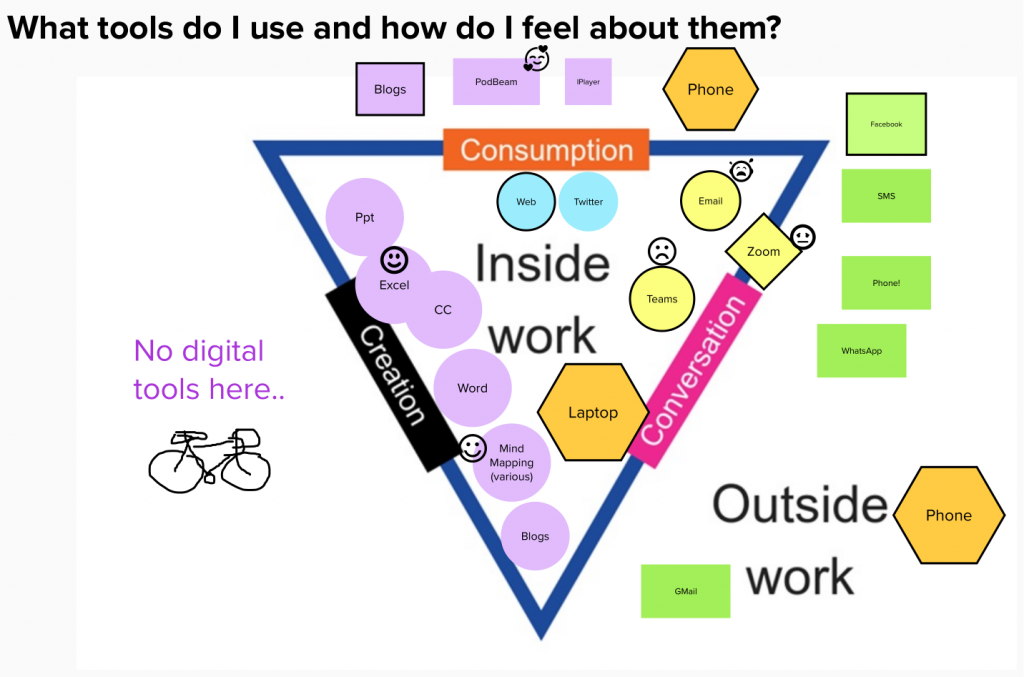
What tools do you use in work and outside work and how do you feel about them? In our introductory Bootcamp session we were asked to draw and then discuss our personal view.
There wasn’t a huge amount of time to do this in the session, so I redid my own diagram afterwards using it as an excuse to try out Mural. The diagram is adapted from work by Lancos and Phipps and, for me, the best bit was adding emoji’s to some of the tools. You will see that email and Teams warranted sad crying but Excel and mindmapping put me in happier zones. (I know I am not exactly normal in my love of data visualisation and infographics.)
Like others in our team I used a laptop inside work, and ignored this when not at work. In many ways Covid-safe working from home has polarised this even more. I don’t do any digital creation outside work, and whilst I would listen to leisure podcasts in my own time – its only a rare occasion that I’d tune into the Wonkhe podcast in work time.
How does this help?
The point of this was to help us get into the shoes of our learners. Our students aren’t a homogenous blob living up to Prensky’s musings on digital natives – they have gaps and preferences. They might feel differently about digital tools? How does that impact our choice of tools to use for learning? How do we scaffold the learning? Is the learning curve worth the reward? Is it inclusive? These questions come well before Privacy/GDPR/Impact Assessment.
Taking a curriculum viewpoint
A tool focus is helpful, but I agree the real trick here is to take a step back, to a curriculum view. How are we developing digital skills and digital agility across the curriculum? Katharine Reedy blog post describes how the OU use card sets to map this out.
